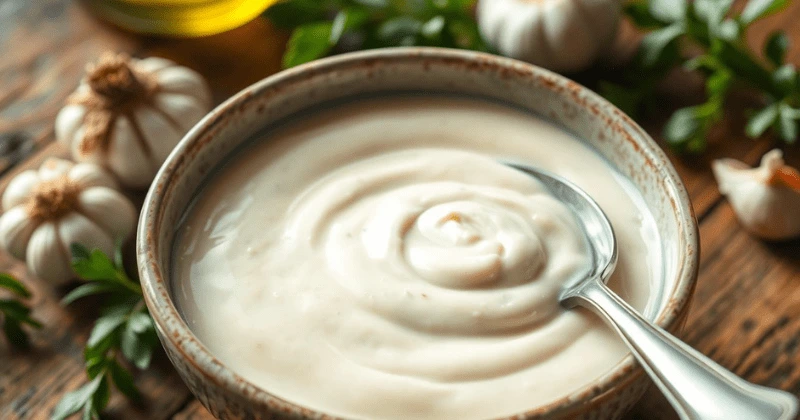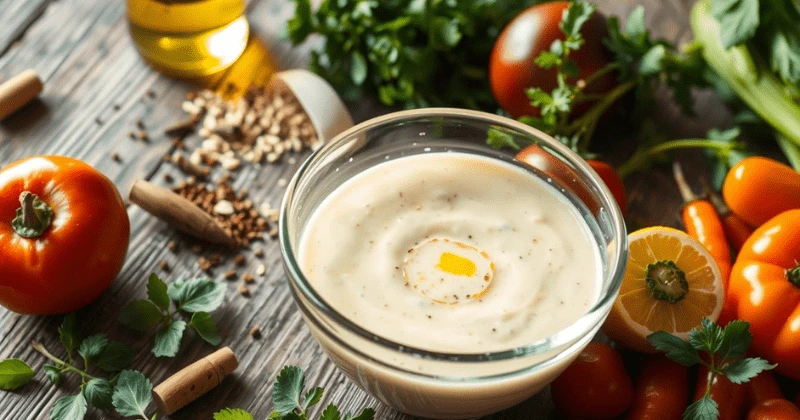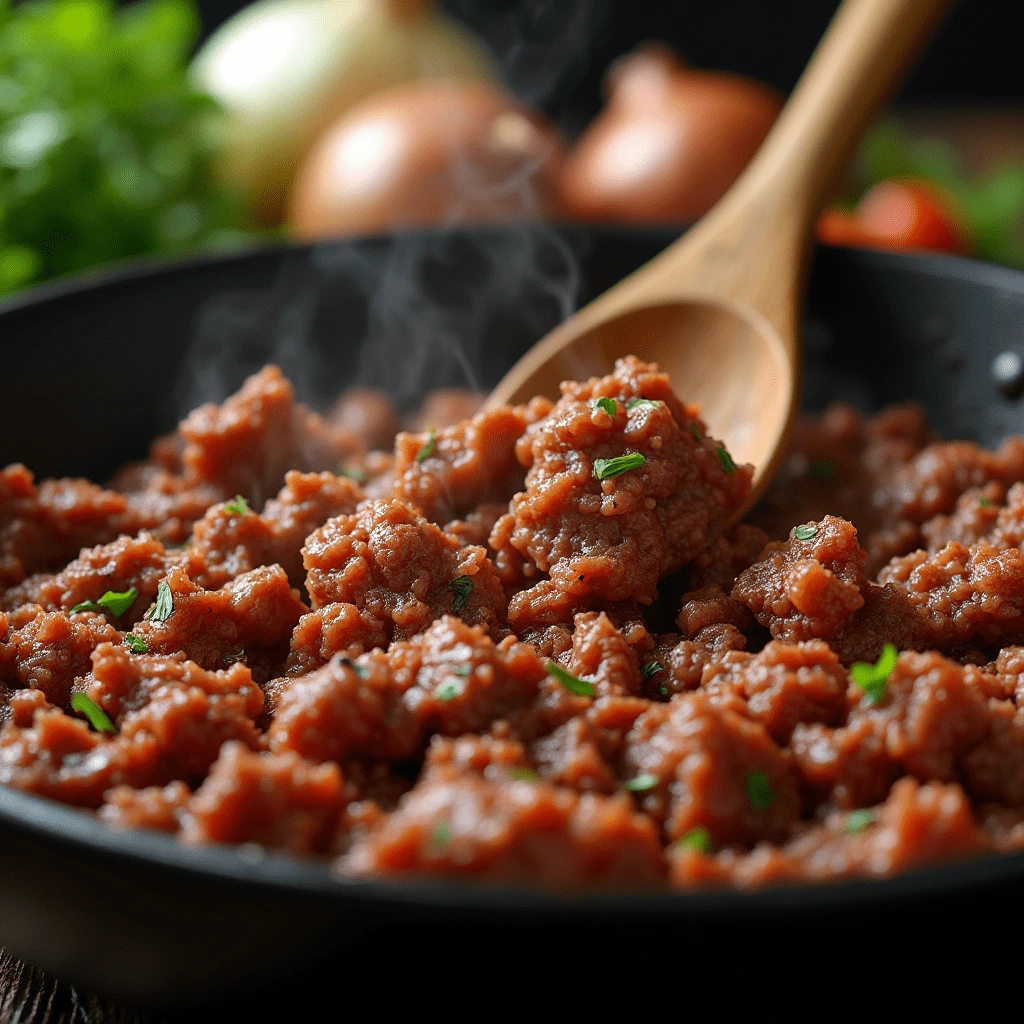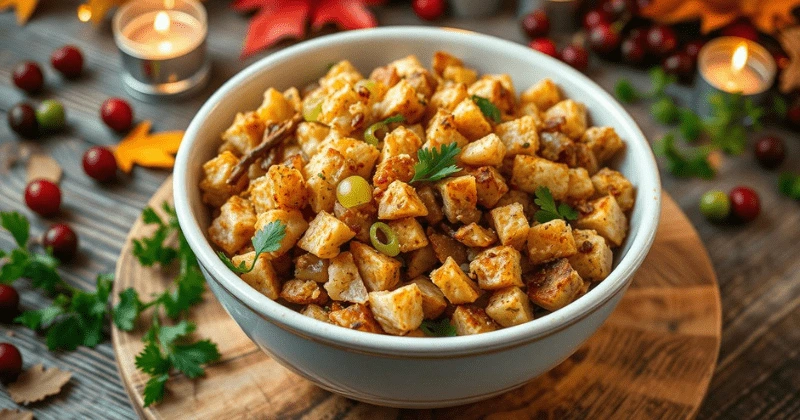Fresh, flavorful, and undeniably satisfying—nothing compares to the taste of a homemade dressing drizzled over your favourite salad or dish. Have you ever paused to consider what’s actually in those store-bought bottles lining the supermarket shelves? Loaded with preservatives, artificial flavours, and hidden sugars, they often overshadow the essence of a good dressing: simplicity and freshness. Now imagine a dressing tailored precisely to your taste, made with wholesome ingredients you can trust.
Mastering how to make homemade dressing is a culinary skill and a gateway to healthier eating. Whether you crave the tang of a zesty vinaigrette, the creamy richness of a ranch, or the aromatic blend of herbs and spices in an Italian dressing, you can easily create it all. The beauty lies in its simplicity—just a few staple ingredients from your pantry can produce extraordinary results.
By embracing this art, you’re not just crafting dressings but elevating your meals and taking control of your health. You’ll discover that the process is quicker, more affordable, and far more rewarding than ever imagined. Ready to revolutionize your kitchen? Dive into this guide on how to make homemade dressing from scratch and transform your meals, one delicious drizzle at a time!
Table of Contents
Understanding Different Types of Homemade Dressings
There are many homemade dressing options. From the classic Southern-style cornbread dressing to the lighter vinaigrette variations, each one brings its own flavors and textures to your salads and sides.
Traditional Southern-Style Dressing
The Southern-style dressing is made with cornbread. It has a crumbly texture and a rich, savoury taste. It includes herbs like sage, onions, and celery, making it a comforting dish for Southern holidays.
Classic Cornbread Dressing
Cornbread dressing is a favourite in Southern cooking. It’s a hearty side dish. The secret to an excellent cornbread dressing is the right mix of moist cornbread, veggies, and seasonings. It can make any holiday meal special.
Modern Vinaigrette Variations
Oil and vinegar dressings, or vinaigrettes, are a lighter choice. They mix oil, vinegar, and seasonings for a tasty topping. You can try everything from balsamic vinaigrette to lemon herb. Homemade vinaigrettes offer endless flavour options.
| Dressing Type | Key Ingredients | Flavor Profile |
|---|---|---|
| Southern-Style Cornbread Dressing | Cornbread, onions, celery, herbs | Savory, crumbly, comforting |
| Vinaigrette | Oil, vinegar, seasonings | Tangy, light, versatile |
“Homemade dressings allow you to control the ingredients and flavors, ensuring a truly customized and delicious experience.”
Essential Ingredients for Perfect Homemade Dressing
Making homemade dressing from scratch is simpler than you might think. The secret is using key ingredients that blend well for the best taste and texture. You need bread or cornbread, veggies, and fresh herbs.
Start with a good bread base like cornbread, Italian, or French. This bread absorbs the dressing’s flavours. Add sautéed onions, celery, and garlic for depth. Fresh herbs like sage, thyme, and parsley add bright flavours.
Chicken broth is key for moisture and richness. In some recipes, crackers or canned soup are added for creaminess. Eggs help everything stick together, making a cohesive dressing.
- Cornbread or bread cubes
- Onions, celery, and garlic
- Fresh herbs (sage, thyme, parsley)
- Chicken broth
- Eggs
- Crackers or canned soup (optional)
You get a moist, flavorful dressing with these ingredients and careful preparation. It will be the highlight of your Thanksgiving.
| Ingredient | Quantity |
|---|---|
| Cornbread or bread cubes | Varies |
| Onions | 1-2 |
| Celery | 2-3 stalks |
| Garlic | 2-3 cloves |
| Fresh sage | 2-3 tablespoons |
| Fresh thyme | 1-2 tablespoons |
| Fresh parsley | 1/4 cup |
| Chicken broth | 6 cups |
| Eggs | 0 |
| Crackers or canned soup | Optional |
Focus on these key ingredients and preparation to make the perfect homemade dressing. With some care, you’ll have a dress that everyone will love.
How to Make Homemade Dressing
Making homemade dressing is a fun cooking skill that can make your Thanksgiving dinner memorable. You can choose from classic Southern-style dressing or a fresh vinaigrette. Let’s explore how to make your tasty dressing from scratch.
Basic Preparation Steps
Start by making or buying fresh cornbread. This is the base of your dressing. Then, cook onions, celery, and bell peppers in butter until soft. Mix these with bread, herbs, and broth.
Mixing Techniques
- Mix everything well to spread out the flavours and moisture.
- Change the dressing’s texture by adding more broth or breadcrumbs.
- Don’t mix too much to keep the dressing light and fluffy.
Temperature Considerations
Bake the dressing at 350°F (175°C) without a cover to get the best taste and texture. It should be golden brown on top in 25-35 minutes. For safety, make sure it’s at least 165°F (75°C) inside.
| Nutrition Facts | Value per Serving |
|---|---|
| Calories | 226 kcal |
| Carbohydrates | 14 g |
| Protein | 7 g |
| Fat | 15 g |
| Saturated Fat | 7 g |
Learning to make homemade dressing is rewarding. It lets you add a special touch to your Thanksgiving meal. Follow these steps, mixing tips, and temperature advice to make a delicious homemade salad dressing that will wow your guests.
Selecting the Right Bread Base
Choosing the proper bread is crucial for homemade dressing. It affects the texture, flavour, and success of your dish. You can pick from cornbread, Italian, or French loaves, each with unique qualities.
Cornbread is a favourite in Southern-style dressings. It adds a savoury flavour and a tender crumb. Italian or French bread, on the other hand, offers a chewier base. Mixing different breads can create a unique texture and taste.
| Bread Type | Characteristics | Best Uses |
|---|---|---|
| Cornbread | Savory, crumbly texture | Traditional Southern-style dressing |
| Italian/French Bread | Sturdy crust, chewy interior | Classic cornbread dressing, turkey stuffing recipe |
| Multigrain/Whole-Wheat Bread | Nutty, hearty flavor | Healthier dressing options |
| Artisanal/Sourdough Bread | Complex, tangy flavor | Gourmet dressing recipes |
Always choose day-old bread for your dressing. It’s drier and absorbs flavours better. Try different breads to find the perfect match for your taste.
The Role of Herbs and Seasonings
Adding the right herbs and seasonings can make your homemade dressings taste amazing. Finding the right mix of fresh and dried herbs is key for an autumn-inspired dressing.
Fresh vs. Dried Herbs
Fresh herbs like sage, thyme, rosemary, and parsley add bright, aromatic flavours. They match well with autumn’s earthy tones. Dried herbs, on the other hand, offer a deeper flavour. Mixing fresh and dried herbs creates a rich taste.
Seasoning Combinations
Classic mixes like sage and thyme are great for autumn dressings. But feel free to experiment! Add basil for a modern twist or poultry seasoning for warmth. The choices are endless for creating the perfect flavour.
“The right blend of herbs and seasonings can truly elevate a simple homemade dressing into a flavor-packed masterpiece.”
Proper Moisture Levels and Consistency
Getting the proper moisture and consistency is key to a tasty homemade dressing. It’s all about balancing dry ingredients with the right amount of liquid. The recipe suggests using about one broth for every four cups of dry mix as a starting point.
For the how long do you cook dressing question, the recipe advises baking at 350 degrees for 45 minutes covered. Then, bake for another 25-35 minutes without foil. This method ensures the dressing is moist but not soggy.
If your dressing seems too dry, add chicken stock a little at a time until it’s just right. If it’s too wet,bake it longer to dry out a bit. You want it to hold together when you scoop it but not be too wet.

“Leftover cornbread dressing can be stored in the fridge for 3 to 4 days and reheated at 350°F for about 15-20 minutes. If freezing the cornbread dressing, it can last in the freezer for up to a month. Thaw it overnight in the fridge and reheat in the oven as instructed.”
By focusing on moisture and consistency, your homemade dressing will always be moist and delicious.
Time and Temperature Guidelines
Making the perfect homemade cornbread dressing needs careful planning. You must consider the time and temperature to get the right texture and taste. It’s essential to follow specific steps and use the best baking temperature.
Preparation Timing
For the best results, make the cornbread 1-2 days before. This lets it dry out a bit. Then, it can soak up the broth better and become a cohesive dressing. When you’re ready to assemble it, plan for about 50 minutes of preparation time, including cooking.
Optimal Baking Temperature
Bake the dressing at 350°F (175°C) for 45 minutes. It should turn golden brown and be set in the middle. This temperature helps the dressing cook evenly, allowing the flavours to mix well and the top to get crispy.
By following these guidelines, you’ll get a moist, flavorful, and perfectly cooked cornbread dressing that will impress your guests and satisfy your taste buds.
| Preparation Time | Baking Time | Total Time | Servings |
|---|---|---|---|
| 15 minutes | 45 minutes | 1 hour | 12 |
“The key to a perfect cornbread dressing is in the preparation and baking. By following the right timing and temperature, you can create a dish that is both comforting and delicious.”
Make-Ahead Tips and Storage Solutions
Planning is key when making homemade dressing. Preparing parts of it early can make the process smoother, and your dressing will always be perfect.
Start by making cornbread or toasting bread cubes a day or two early. You can also sauté veggies like onions, celery, and herbs beforehand. This makes assembling and baking the dressing a breeze.
It’s best to mix all ingredients just before baking. This keeps the bread from getting soggy. Leftover homemade dressing can stay in the fridge for up to 4 days. To reheat, just put it in a dish, cover it with foil, and bake at 350°F (175°C) for 30 minutes.
| Preparation Tip | Benefit |
|---|---|
| Make cornbread or toast bread cubes in advance | Saves time on the day of baking |
| Sauté vegetables ahead of time | Enhances flavor and reduces active cooking time |
| Assemble dressing just before baking | Prevents the bread from becoming too soggy |
| Refrigerate leftover dressing | Enjoy for up to 4 days |
| Reheat in the oven at 350°F (175°C) | Crisp up the top while heating through |
These make-ahead tips and storage methods ensure that your homemade dressing stays fresh and delicious, always ready to serve.

Common Mistakes to Avoid
Making the perfect homemade dressing needs careful attention and knowledge of common mistakes. One big issue is oversaturating the bread, which makes it soggy. To fix this, dry the bread cubes in the oven at 350°F for about 20 minutes before adding them to the dressing.
Another mistake is failing to season the dressing right. Always taste the mix before adding eggs or binders. This ensures the flavours are balanced. Adjust the seasonings as you go, trying different herbs and spices to get your ideal taste.
- Don’t overmix the dressing, as it can become dense. Instead, gently mix the ingredients to keep it light and fluffy.
- Make sure the vegetables, herbs, and other add-ins are evenly spread. This helps create a balanced flavour in every bite.
By avoiding these common mistakes and following good practices, you can make a homemade dressing that’s perfect for any special occasion.
“Homemade dressing is all about finding the right balance – the perfect mix of flavors, textures, and moisture. With a bit of care and attention, you can avoid common mistakes and make a dish that will be remembered.”
Customizing Your Dressing Recipe
Homemade dressings open up a world of possibilities for customization. You can make your how to make homemade dressing and salad dressings even better by adding unique mix-ins. Try different ingredients to find your favourite flavour.
Add chopped bacon, diced apples, or toasted nuts to your dressing. These can bring exciting textures and tastes. For a veggie option, use vegetable broth instead of chicken. You can also try new herb mixes or add regional flavours like oysters or mushrooms.
- Add chopped bacon, diced apples, or toasted nuts for extra texture and flavour
- Substitute vegetable broth and omit chicken for a vegetarian-friendly dressing
- Experiment with different herb combinations or incorporate regional flavours
One of the best things about making your homemade dressing is making it your own. Don’t be shy to try new things; let your creativity run wild. Customizing your dressing can make your salads truly special.

“The best part about making your own salad dressing is the freedom to experiment and find the perfect blend of flavors that speaks to your taste buds.”
Essential Kitchen Tools and Equipment
Making the perfect homemade dressing needs more than just a few ingredients. You’ll want the right kitchen tools and equipment to make it smooth and easy. From sturdy mixing bowls to special measuring tools, these essentials will help you make tasty homemade dressings.
If your recipe asks for it, you’ll need a big skillet or saucepan for sautéing veggies. A large mixing bowl is key for mixing all the ingredients well. For baking, a 9×13-inch baking dish or two 8×8-inch dishes are perfect.
A sharp chef’s knife is a must for chopping fresh herbs, garlic, and other aromatics. You’ll also need measuring cups and spoons for accurate measurements. A lemon squeezer or citrus juicer helps get the most flavour from your ingredients for oil-based dressings.
- Large skillet or saucepan for sautéing
- Spacious mixing bowl for combining ingredients
- 9×13-inch baking dish or two 8×8-inch dishes for baking
- Sharp chef’s knife for chopping herbs and aromatics
- Measuring cups and spoons for precise portioning
- Lemon squeezer or citrus juicer for oil-based dressings
You’re ready to make delicious homemade dressings with these essential tools and equipment. These will take your salads and dishes to the next level. Remember, the right tools can make a big difference in the kitchen.
Nutritional Information and Dietary Modifications
Understanding the nutritional content of homemade salad dressings is key. It helps you make choices that fit your health and lifestyle. Let’s explore the details together.
Caloric Content
A typical serving of homemade salad dressing has about 250 calories. It includes 9 grams of fat, 38 grams of carbs, and 5 grams of protein. To cut calories, try using less butter or oil. You can also use low-fat broths or healthy substitutes to keep the flavour and texture right.
Dietary Alternatives
If you follow a gluten-free diet, you can easily modify your dressing recipes. Just use gluten-free cornbread or skip wheat-based ingredients. For less fat, try low-fat dressings that still taste great.
FAQ
What is homemade dressing made of?
Homemade dressing blends fresh, natural ingredients tailored to elevate any salad. Typically, it consists of oils like olive or avocado, acidic components such as vinegar or lemon juice, and seasonings like herbs, spices, or garlic. By learning how to make homemade dressing, you can craft unique flavours without preservatives or artificial additives, ensuring a healthier, tastier option.
What is the simplest form of dressing?
The simplest form of dressing is a classic vinaigrette, a harmonious mix of oil and vinegar. Enhanced with a pinch of salt and pepper, this foundational recipe balances richness and acidity. By mastering how to make homemade dressing, even basic variations can transform salads into vibrant culinary experiences, showcasing the elegance of simplicity and the purity of fresh ingredients.
What is homemade stuffing made of?
Homemade stuffing is a savoury medley of cubed bread, aromatic vegetables like onions and celery, and herbs such as sage or thyme. Combined with broth for moisture, it perfectly balances texture and flavour. Knowing how to make homemade dressing allows you to customize this holiday staple, transforming it into a personal culinary masterpiece.
What is traditional dressing made of?
Traditional dressing is a comforting blend of bread cubes, herbs like sage and parsley, and sautéed onions and celery. It is often moistened with rich broth and occasionally enriched with eggs, achieving a perfectly savoury consistency. You can recreate this timeless recipe by exploring how to make homemade dressing, adapting its flavours to suit modern tastes while preserving its classic essence.
Is dressing a mayonnaise?
Dressing and mayonnaise share similarities but are distinct. Mayonnaise is an emulsified mixture of oil, egg yolks, and acid that serves as a creamy base. Dressing, on the other hand, can be vinaigrette-based, creamy, or herbaceous. You can craft diverse blends by mastering making homemade dressing, some incorporating mayonnaise for richness and others highlighting fresh, zesty flavours.
What is the basic formula for salad dressing?
The basic formula for salad dressing combines three parts oil with one part acid, such as vinegar or citrus juice. This ratio forms the foundation of endless variations, enhanced by seasonings like salt, pepper, or herbs. By understanding how to make homemade dressing, you can personalize this simple formula to suit any palate, creating vibrant and flavorful salads effortlessly.
What are the basics of dressings?
The basics of dressings revolve around balancing oil, acid, and seasonings. Oils like olive or avocado provide richness, while acids such as vinegar or lemon juice offer brightness. Herbs, spices, and sweeteners add complexity. By mastering making homemade dressing, you unlock endless possibilities, crafting blends that complement every dish with freshness and flavour precision.










